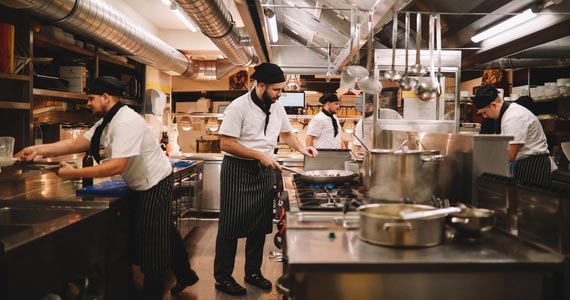Reputation can make or break any business, especially when it comes to those in the hospitality industry. One bad experience can result in the loss of a loyal customer. Word of mouth is a restaurant’s best advertiser, so this can have very damaging consequences. Restaurants with high hygiene ratings that organise their food storage correctly and efficiently can be relied on to produce high-quality, fresh-tasting dishes.Food Rotation
One of the most basic rules of food storage is correct rotation. When a new delivery arrives, produce should be placed at the back of the fridge or freezer so that existing food is used first. Staff should know to always take from the front, and a chart showing the dates goods arrived can be particularly useful.
Shelving
Investing in quality shelving to keep your food organised and clean will have the added benefit of maximising your space, and staff will always know where they can find the ingredients they need.
Labels
Developing a habit of labelling containers with the content and date can help with food rotation and storage.
Packing
Make sure there is space between food and containers. Packing food too tightly can affect the temperature and quality of food.
Walk in cold rooms from companies such as https://www.fridgefreezerdirect.co.uk/cold-rooms provide cold storage capacity for all types of ingredients and foods. Organising produce and rotating stock can be done quickly and efficiently as everything is on hand whenever it’s needed.
Changes in food safety regulations are expected as a result of Brexit.
Temperature
It’s essential that food is stored at the correct temperature and monitored regularly so adjustments can be made if necessary.
Meat Storage
Meats should always be stored on the bottom shelf in case of dripping and contamination with other foods, and they should be at least 6 inches above floor level.
Fresh Produce
Fruits and vegetables should be stored within two hours of delivery. They must be kept separately to prevent damage, and it’s a good idea to keep them away from strong-smelling foods.
Dry Goods
Dry foods should be stored in cool, dry areas that have good ventilation and circulation to prevent bacterial growth.
General Areas
Floor areas should be cleaned daily, and vents shouldn’t be blocked or covered.
Finally, ensure all freezers are defrosted regularly and that food is stored correctly during any cleaning process.


